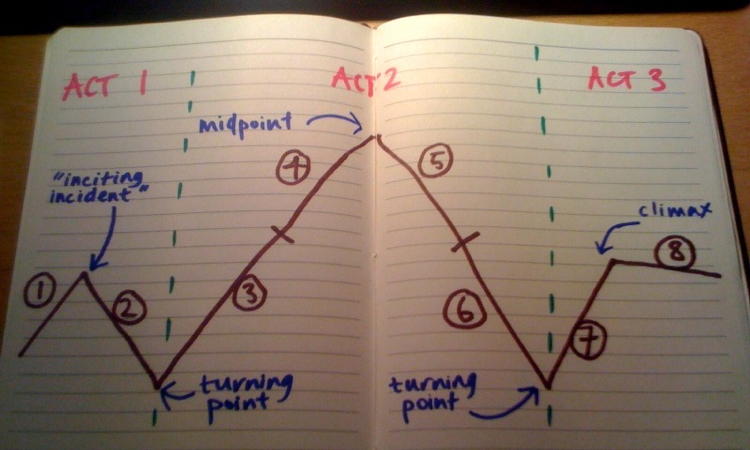Sign up for the
TSL Newsletter
and get $50 off Final Draft 12
By Jamie Jensen · April 16, 2014

If you haven’t overwhelmed yourself reading McKee’s Story, don’t.
This tome is apparently full of useful knowledge on how to write. Well, at least that’s what I hear because I can’t get through the dizzy-ing charts and over analytical breakdowns of story beats without hitting the snooze button in my brain.
There are countless books written about how to structure a screenplay the “Hollywood” way. It all breaks down to basic mythic structure, which by the way has existed forever throughout the universe, through every culture and every civilization and has now been repurposed and sold like Hollywood invented it. Nope. Here’s the big secret about Story Structure (from a girl who designed an entire major at NYU around it); it’s naturally ingrained in your psyche already.
That means that short of tweaking the timing of events in your screenplay – which do matter for emotional impact – you already know how to structure your screenplay.
This doesn’t mean it’s easy. It doesn’t mean you don’t have to re-write things to honor your story in the best way possible. It does mean: you only get there by writing and re-writing with feedback from story-smart people.
So with this in mind, I would like to invite you to stop torturing yourself about structure in 5 easy steps.
1. Remember that being good at it comes with practice.
This whole screenwriting thing is a marathon and not a sprint. Practice, practice, practice. The more you write, the better you get. So the next time you feel that structure is the aspect that’s stressing you out (read: blocking you) just forget about it and write.
2. Focus on the story YOU WANT TO TELL.
It all comes down to this. I’ve read many screenplays that had great structure but were boring as all hell because they lacked voice, an interesting point of view, or a vision. Worry less about cramming it all into a pretty box, and MORE about getting at the heart of what you want to say and how you want to say it. (Isn’t that the whole point of being a writer, anyway?)
3. Shift your priority to simply keepin' it movin.’
The truth is: as long as the story moves forward, you’re doing your job. Make sure that each scene has a purpose, a point, a direction. That within each, some tiny shift is happening within the characters or the world of your story that makes change inevitable. Some scenes should move the character farther away from their goals, and some should move them closer to their goals. Simply alternating between the two is what keeps the tension high and the story moving.
4. Know your characters.
Know what they want, what they feel, and what they’re willing to do to get there. If you can tap into what they would do in any situation, you already know how to challenge them and make them grow. Take that, Hollywood Structure!
5. Realize that sometimes structure can actually set you free.
For those stories and times when you go into a draft with a tightly structured outline, you get to play a lot within the framework you’ve created. Picture this: the structure is the frame, the scenes are the canvas and the dialogue and action is your paint. This doesn’t mean you have to attack every single draft this way. However, it’s just a perspective to consider when you feel “trapped” by structure.
And remember most of all, you’re not alone in trying to execute a pristine structure with your work. We’re all in this together!
Please comment below and share your struggles with structure or how these tips are helpful (or not at all)!